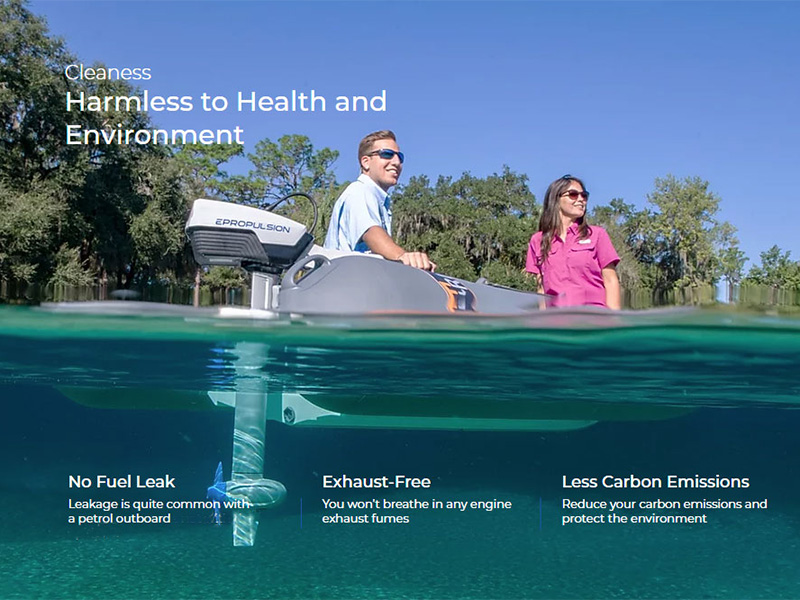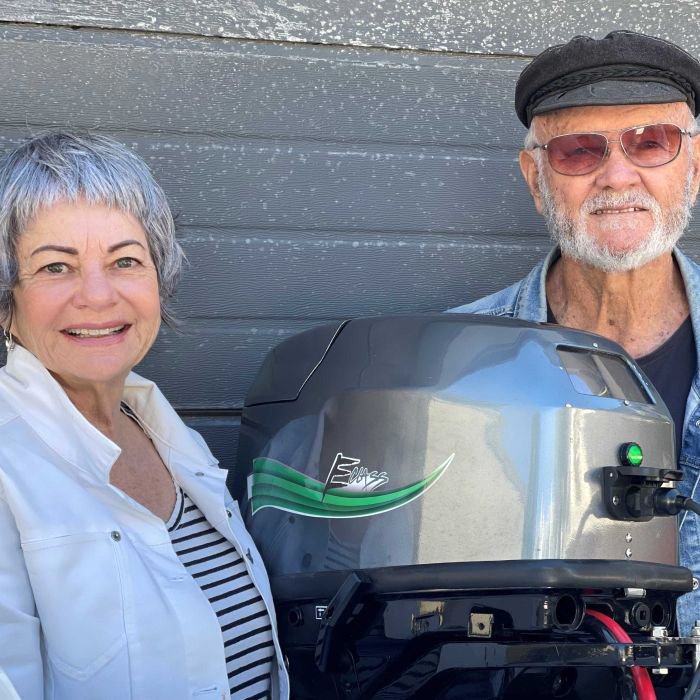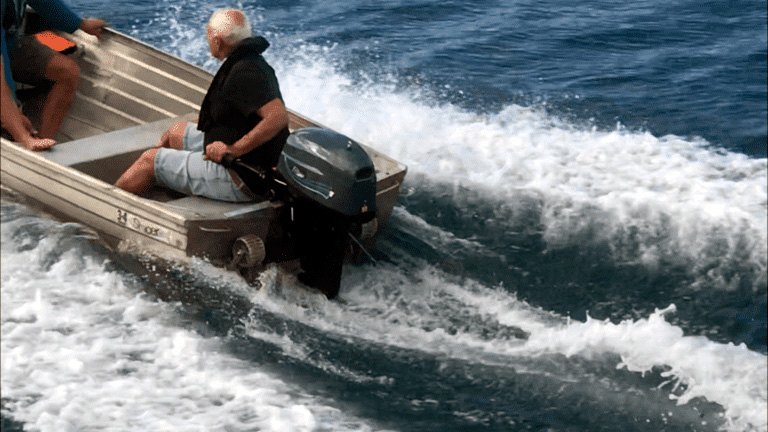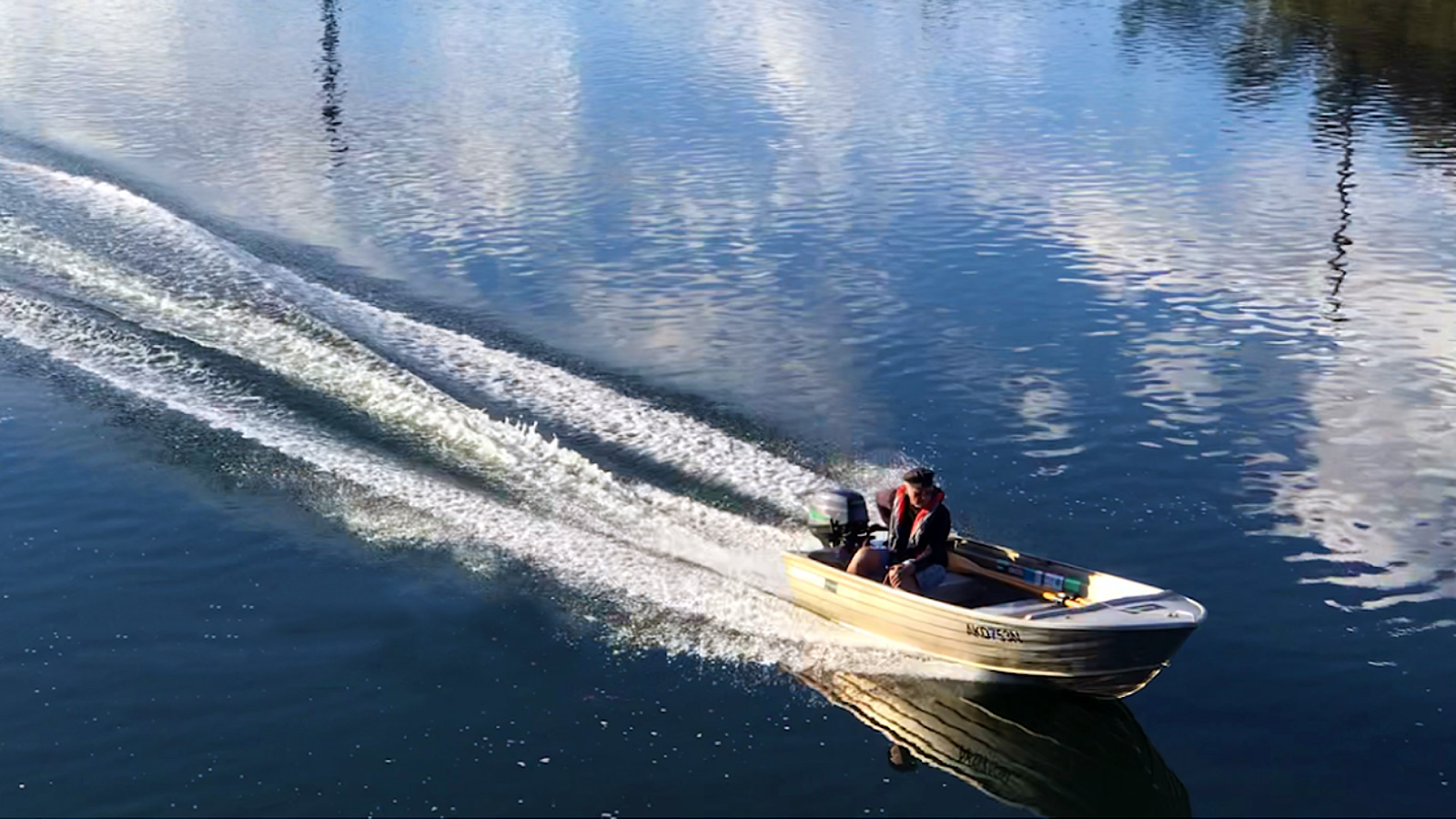Well, why not? Let’s look at the plus side:
They’re quiet.
Quiet is nice for the humans but it’s also been shown that boat noise in high density areas like Pittwater, impacts marine life and marine mammal’s ability to communicate with one another – so quiet is nice for everyone.
They’re non-polluting.
No oil, no petrol. Got to be good for the environment.
They’re maintenance free.
No gears, few moving parts, no service costs.
No expensive fuel.
You’ll never have to pull up at the marine bowser again.
But are they powerful enough? How do they perform in comparison to conventional outboard motors? Are they worth the cost? Are they practical?
POWER
Most people are familiar with the small electric outboard motors which are mainly used for trolling and can power a light inflatable.

Photo: Epropulsion Australia
However, to power the kind of commuter boat that offshore residents use, requires something with a bit more grunt.
That’s where Lynelle Johnson and her business partner Ron Kelly of E-Class Outboards (the only Australian manufacturers of electric outboard motors) come into the picture. They’re manufacturing electric outboards that performance-wise are on par with your average tinny outboard. However, when it comes to power it’s not like comparing apples with apples. The technology is completely different. Whereas fuel powered outboards talk in horsepower, electric powered outboards are measured in kilowatts.
In general terms 1kW = 1.3hp or 40kW = 50hp.

Photo: Lynelle Johnson and Ron Kelly
PERFORMANCE
The electric outboard has instant torque. In a conventional outboard, the engine revs up to reach the desired horsepower to get up on a plane. With instant torque you can get up on to a plane quicker which means a saving of power. The electric engine loves load but of course that will affect your battery run time. And because you can turn the propellor incredibly slowly, instead of changing gears to reverse thrust when docking, the boat will hover which makes docking a breeze.

COST
There’s a few considerations to take into account with cost. The Australian made electric outboard is designed to fit into a 2 stroke motor casing and comparatively it’s around the same price as a 4 stroke conventional outboard. But then there’s the lithium-ion battery which is expensive – probably twice the price of the motor. The battery life is generally ten years and no, you won’t have to shell out for petrol or engine maintenance in that time but it’s still a big initial outlay.

3 -5 kWh Lithium Ion Batteries from EClass
PRACTICALITY
Here’s the rub. How do you charge your battery? It’s too heavy to lug in and out of your boat and it’s a lot of battery so your solar powered trickle charger won’t do it. You need a mains 240 volt power supply which means plugging in somewhere. If you’re like most people, you’ll be tying up at the commuter wharf at Church Point but if you think Council is going to provide a charging station for your boat, think about how many there are for EVs. However, if you’ve got a berth at one of the bigger marinas, you can most likely find a power point.
Article By: Pru Colville
Source: ABC
